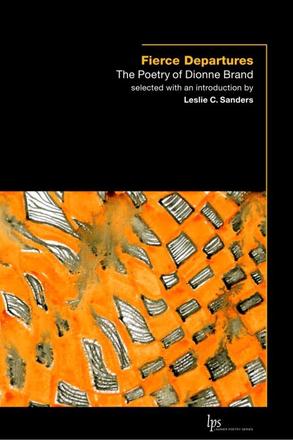
Description
The selections in Fierce Departures, drawn from Dionne Brand’s work since 1997, delineate with searing eloquence how history marks and dislocates peoples of the African diaspora, how nations, concretely and conceptually, fail to create safe haven, and how human desire persists nevertheless. Through a widening canvas, Brand unfolds the (im)possibilities of belonging for those whom history has dispossessed. Yet she also shows how Canada, and in particular Toronto, remade by those who alight on it, is a place of contingency. Known for her linguistic intensity and lyric brilliance, Brand consoles through the beauty of her work and disturbs with its uncompromising demand for ethical witness.
In her introduction, editor Leslie C. Sanders traces the evolution of Brand’s poetic concerns and changing vision. In particular, she observes Brand’s complex use of landscape and language to delineate the ethical and emotional issues around the desire for place. She argues that Brand reformulates Northrop Frye’s question “Where is here?,” disturbing and expanding the national imaginary.
As afterword, Brand has selected passages from her evocative collection of essays A Map to the Door of No Return. Read as an ars poetica, the passages summon the presences of those whose lives are circumscribed by the histories the poet narrates as her own.
Reviews
As American poet Anne Waldman usefully asks, ‘And what to make of [poetry]? “Do” with it? “Do” anything? Is it part of the poet's vow to perpetually catch, distill, refine, re-imagine where one walks, what one notices?’ I can't answer for all poets here. As a teacher, however, I can say that yes, it is our vow as instructors to show students how poetry perpetually catches, distills, refines, and re-imagines our selves and our worlds. I agree with Neil Besner, general editor of Wilfrid Laurier Press, that what we ‘do’ with poetry starts with our students. We need to attend more carefully to what poetry we teach as well as how we teach it. I thus applaud the efforts of the Laurier Poetry Series, which, with the hopes of creating and sustaining ‘the larger readership that contemporary Canadian poetry so richly deserves,’ has been publishing ‘useful, engaging, and comprehensive introductions’ to the life's work of major Canadian poets. Each of these volumes includes 35 poems selected and introduced by a critic, followed by an afterword by the poet. The volumes are intended, Besner argues, to make the connections between the life and the work more accessible to a ‘general’ reader (‘Foreword’). Besner's eloquent, timely, and practical arguments remind me of Lyn Hejinian's belief that our poetic revolutions will always be ‘local, particular, and temporary,’ but are nonetheless undiminished. Let us consider what poetry is doing in the world. Let us consider how Laurier's texts differ, as Besner argues in their intent, from the conventional anthology and whether they in fact demonstrate the relevance of poetry to a life. Let us consider, for example, how in the Laurier Poetry Series' most recent collections, Mobility of Light: The Poetry of Nicole Brossard and Fierce Departures: The Poetry of Dionne Brand, we might understand what it means to live. Let us think about how, through poetry, we can re-imagine who we are as well as the world we walk through.
- Emily Carr, ARC Poetry Magazine, Winter 2010, 2010 January
Leslie Sanders provides an insightful and engaging introduction which delineates some of the central themes and dilemmas that course through Brand's work, and calls attention to some of her unique poetic gifts. As a reader who was award of Brand, but had never read or studied her work, I found this format very effective. The collection provides a broad sampling across Brand's writing career and makes it possible to trace the evolution of her thematic concerns and also the diminution of some themes and the growth of others, a perspective that could not be easily achieved by reading the individual works. This collection serves both as an overview and as an appetizer, a small feast that serves to awaken the desire to seek out the works in their original, organic forms. The poems themselves are strong and beautiful... [and] constitute an animated conversation between figure and ground, person and place.... Fierce Departures functions as a showcase for Dionne Brand's considerable gifts, and provides a delightful introduction to her range, her pre-occupations and her unforgettable sound. Read this collection if you would like to understand why she has won so many awards, and how well she has earned her position as Poet Laureate for Toronto.
- Elaine Jackson, Canadian Woman Studies, Volume 28, number 1, 2010 October